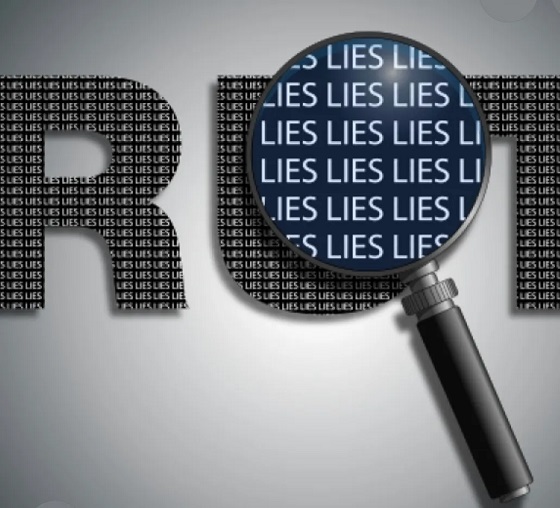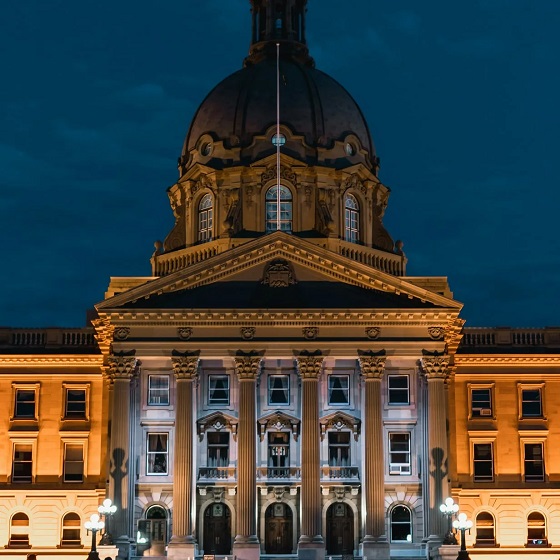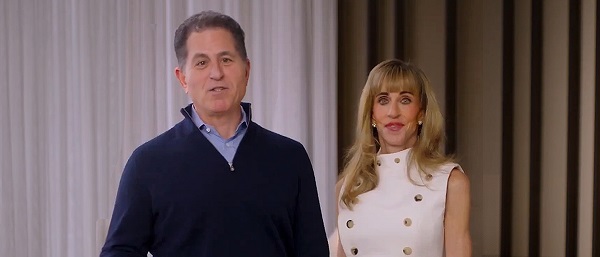Uncategorized
After 2 years of waiting, Americans will see Mueller report

WASHINGTON — After nearly two years of waiting, America is about to get some answers straight from Robert Mueller— but not before President Donald Trump’s attorney general has his say.
The Justice Department on Thursday is expected to release a redacted version of the special counsel’s report on Russian election interference and the Trump campaign, opening up months, if not years, of fights over what the document means in a deeply divided country.
Even the planned release of the nearly 400-page report quickly spiraled into a political battle Wednesday over whether Attorney General William Barr is attempting to shield the president who appointed him and spin the report’s findings before the American people can read it and come to their own judgments.
Barr scheduled a 9:30 a.m. news conference to discuss the report before providing redacted copies to Congress and the public. The news conference, first announced by Trump during a radio interview, provoked immediate criticism from congressional Democrats.
House Speaker Nancy Pelosi said Barr had “thrown out his credibility” and “the DOJ’s independence.” And Senate Minority Leader Chuck Schumer said, “The process is poisoned before the report is even released.”
“Barr shouldn’t be spinning the report at all, but it’s doubly outrageous he’s doing it before America is given a chance to read it,” Schumer said.
Hours before Barr’s press conference, Pelosi and Schumer issued a joint statement calling for Mueller to appear before Congress “as soon as possible.”
Trump himself was in a high state of alert ahead of the report’s release. He repeated what has become a near daily refrain of criticism of the Russia investigation using his
Justice Department spokeswoman Kerri Kupec said Barr would address the department’s interactions with the White House over Mueller’s report, whether executive privilege was invoked and the process Barr used to black out portions of the document.
He was to be accompanied by Deputy Attorney General Rod Rosenstein, who oversaw the investigation after Mueller’s appointment in May 2017. Mueller and team will not attend, special counsel spokesman Peter Carr said.
After the news conference, the report was to be delivered to Congress on compact discs between 11 a.m. and noon and then posted on the special counsel’s
Barr formulated the report’s roll-out and briefed the White House on his plans, according to a White House official who was not authorized to discuss the matter publicly. The White House declined to comment on an ABC News report that it had been briefed on the contents of Mueller’s report beyond what Barr has made public.
At a later date, the Justice Department also plans to provide a “limited number” of members of Congress and their staff access to a copy of the Mueller report with fewer redactions than the public version, according to a court filing.
The report was expected to reveal what Mueller uncovered about ties between the Trump campaign and Russia that fell short of criminal conduct. It was also to lay out the special counsel’s conclusions about formative episodes in Trump’s presidency, including his firing of FBI Director James Comey and his efforts to undermine the Russia investigation publicly and privately.
The report was not expected to place the president in legal jeopardy, as Barr made the decision that Trump shouldn’t be prosecuted for obstruction of justice. But it is likely to contain unflattering details about the president’s efforts to control the Russia investigation that will cloud his ability to credibly claim total exoneration. And it may paint the Trump campaign as eager to exploit Russian aid and emails stolen from Democrats and Hillary Clinton’s campaign even if no Americans crossed the line into criminal activity.
The report’s release provides a test of Barr’s credibility as the public and Congress judge whether he is using his post to protect Trump.
Barr will also face scrutiny over how much of the report he blacks out and whether Mueller’s document lines up with a letter the attorney general released last month. The letter said Mueller didn’t find a criminal conspiracy between the Trump campaign and the Russian government but he found evidence on “both sides” of the question of whether the president obstructed justice.
Barr has said he is redacting grand jury and classified information as well as portions relating to ongoing investigations and the privacy or reputation of uncharged “peripheral” people. But how liberally he interprets those categories is yet to be seen.
Democrats have vowed to fight in court for the disclosure of the additional information from the report and say they have subpoenas ready to go if it is heavily redacted.
House Judiciary Chairman Jerrold Nadler, D-N.Y., joined the chairs of four other House committees in calling for Barr to cancel his news conference. But Rep. Doug Collins of Georgia, the ranking Republican on the Judiciary Committee, defended Barr and accused Democrats of “trying to spin the report.”
Collins said Barr has done “nothing unilaterally,” saying he had worked with Rosenstein and Mueller’s team “step by step.”
Mueller is known to have investigated multiple efforts by the president over the last two years to influence the Russia probe or shape public perception of it.
In addition to Comey’s firing, Mueller scrutinized the president’s request of Comey to end an investigation into Trump’s first national security adviser, his relentless badgering of former Attorney General Jeff Sessions over his recusal from the Russia investigation and his role in drafting an incomplete explanation about a meeting his oldest son took at Trump Tower with a Kremlin-connected lawyer.
Overall, Mueller brought charges against 34 people — including six Trump aides and advisers — and revealed a sophisticated, wide-ranging Russian effort to influence the 2016 presidential election. Twenty-five of those charged were against Russians accused either in the hacking of Democratic email accounts or of a hidden but powerful social media effort to spread disinformation online.
Five former Trump aides or advisers pleaded guilty and agreed to
___
Associated Press writers Mary Clare Jalonick, Lisa Mascaro and Zeke Miller in Washington and Jonathan Lemire and Jennifer Peltz in New York contributed to this report.
___
For complete coverage of the Mueller report, go to: https://www.apnews.com/TrumpInvestigations
Chad Day, Eric Tucker And Michael Balsamo, The Associated Press
Uncategorized
Cost of bureaucracy balloons 80 per cent in 10 years: Public Accounts

The cost of the bureaucracy increased by $6 billion last year, according to newly released numbers in Public Accounts disclosures. The Canadian Taxpayers Federation is calling on Prime Minister Mark Carney to immediately shrink the bureaucracy.
“The Public Accounts show the cost of the federal bureaucracy is out of control,” said Franco Terrazzano, CTF Federal Director. “Tinkering around the edges won’t cut it, Carney needs to take urgent action to shrink the bloated federal bureaucracy.”
The federal bureaucracy cost taxpayers $71.4 billion in 2024-25, according to the Public Accounts. The cost of the federal bureaucracy increased by $6 billion, or more than nine per cent, over the last year.
The federal bureaucracy cost taxpayers $39.6 billion in 2015-16, according to the Public Accounts. That means the cost of the federal bureaucracy increased 80 per cent over the last 10 years. The government added 99,000 extra bureaucrats between 2015-16 and 2024-25.
Half of Canadians say federal services have gotten worse since 2016, despite the massive increase in the federal bureaucracy, according to a Leger poll.
Not only has the size of the bureaucracy increased, the cost of consultants, contractors and outsourcing has increased as well. The government spent $23.1 billion on “professional and special services” last year, according to the Public Accounts. That’s an 11 per cent increase over the previous year. The government’s spending on professional and special services more than doubled since 2015-16.
“Taxpayers should not be paying way more for in-house government bureaucrats and way more for outside help,” Terrazzano said. “Mere promises to find minor savings in the federal bureaucracy won’t fix Canada’s finances.
“Taxpayers need Carney to take urgent action and significantly cut the number of bureaucrats now.”
Table: Cost of bureaucracy and professional and special services, Public Accounts
| Year | Bureaucracy | Professional and special services |
|
$71,369,677,000 |
$23,145,218,000 |
|
|
$65,326,643,000 |
$20,771,477,000 |
|
|
$56,467,851,000 |
$18,591,373,000 |
|
|
$60,676,243,000 |
$17,511,078,000 |
|
|
$52,984,272,000 |
$14,720,455,000 |
|
|
$46,349,166,000 |
$13,334,341,000 |
|
|
$46,131,628,000 |
$12,940,395,000 |
|
|
$45,262,821,000 |
$12,950,619,000 |
|
|
$38,909,594,000 |
$11,910,257,000 |
|
|
$39,616,656,000 |
$11,082,974,000 |
Uncategorized
Trump Admin Establishing Council To Make Buildings Beautiful Again


From the Daily Caller News Foundation
By Jason Hopkins
The Trump administration is creating a first-of-its-kind task force aimed at ushering in a new “Golden Age” of beautiful infrastructure across the U.S.
The Department of Transportation (DOT) will announce the establishment of the Beautifying Transportation Infrastructure Council (BTIC) on Thursday, the Daily Caller News Foundation exclusively learned. The BTIC seeks to advise Transportation Secretary Sean Duffy on design and policy ideas for key infrastructure projects, including highways, bridges and transit hubs.
“What happened to our country’s proud tradition of building great, big, beautiful things?” Duffy said in a statement shared with the DCNF. “It’s time the design for America’s latest infrastructure projects reflects our nation’s strength, pride, and promise.”
“We’re engaging the best and brightest minds in architectural design and engineering to make beautiful structures that move you and bring about a new Golden Age of Transportation,” Duffy continued.
Mini scoop – here is the DOT’s rollout of its Beautifying Transportation Infrastructure Council, which will be tasked with making our buildings beautiful again. pic.twitter.com/
9iV2xSxdJM — Jason Hopkins (@jasonhopkinsdc) October 23, 2025
The DOT is encouraging nominations of the country’s best architects, urban planners, artists and others to serve on the council, according to the department. While ensuring that efficiency and safety remain a top priority, the BTIC will provide guidance on projects that “enhance” public areas and develop aesthetic performance metrics.
The new council aligns with an executive order signed by President Donald Trump in August 2025 regarding infrastructure. The “Making Federal Architecture Beautiful Again” order calls for federal public buildings in the country to “respect regional architectural heritage” and aims to prevent federal construction projects from using modernist and brutalist architecture styles, instead returning to a classical style.
“The Founders, in line with great societies before them, attached great importance to Federal civic architecture,” Trump’s order stated. “They wanted America’s public buildings to inspire the American people and encourage civic virtue.”
“President George Washington and Secretary of State Thomas Jefferson consciously modeled the most important buildings in Washington, D.C., on the classical architecture of ancient Athens and Rome,” the order continued. “Because of their proven ability to meet these requirements, classical and traditional architecture are preferred modes of architectural design.”
The DOT invested millions in major infrastructure projects since Trump’s return to the White House. Duffy announced in August a $43 million transformation initiative of the New York Penn Station in New York City and in September unveiledmajor progress in the rehabilitation and modernization of Washington Union Station in Washington, D.C.
The BTIC will comprise up to 11 members who will serve two-year terms, with the chance to be reappointed, according to the DOT. The task force will meet biannually. The deadline for nominations will end Nov. 21.
-

 Focal Points2 days ago
Focal Points2 days agoPharma Bombshell: President Trump Orders Complete Childhood Vaccine Schedule Review
-

 Automotive1 day ago
Automotive1 day agoTrump Deals Biden’s EV Dreams A Death Blow
-

 Automotive1 day ago
Automotive1 day agoCanada’s EV Mandate Is Running On Empty
-

 Business18 hours ago
Business18 hours agoWhy Does Canada “Lead” the World in Funding Racist Indoctrination?
-

 Censorship Industrial Complex2 days ago
Censorship Industrial Complex2 days agoFrances Widdowson’s Arrest Should Alarm Every Canadian
-

 Alberta2 days ago
Alberta2 days agoPremier Smith: Canadians support agreement between Alberta and Ottawa and the major economic opportunities it could unlock for the benefit of all
-

 Media18 hours ago
Media18 hours agoThey know they are lying, we know they are lying and they know we know but the lies continue
-

 Alberta2 days ago
Alberta2 days agoA Memorandum of Understanding that no Canadian can understand










